By Stephen Beaumont
The story of one of Niagara’s newest distilleries, Limited Distilling, begins in the basement of 15-year-old Danny Keyes – but not in the way you might think.
It wasn’t an illicit distillery that Keyes set up in 1999, but rather an internet radio station, one which would, according to Keyes, soon become the world’s largest!
The punk-themed station lasted over a dozen years, says Keyes, but ran into trouble in the late aughts when it began to bleed advertisers. By then married to Jennifer Miles, Keyes and his wife recognized that they would soon need to find something to sell for income or pack in the whole operation. What they did was absolutely remarkable in its prescience.

Rather than asking advertisers for money, they decided to accept payment in stocks of vinyl records, which they turned around and sold through a new online store. That store, srcvinyl, was so successful that the couple soon started licensing music from all the big record labels and pressing the records themselves, in fairly short order developing their U.S.-based dot-com side into what Keyes describes as one of the largest such operations, perhaps the largest.
Still, Keyes and Miles feared that interest in vinyl had its limits and so, in 2013, began planning for life after records. Entrepreneurs through and through, they concluded that they needed a new business which: a) involved doing something they love; and b) was recession-proof. That something was distilling.
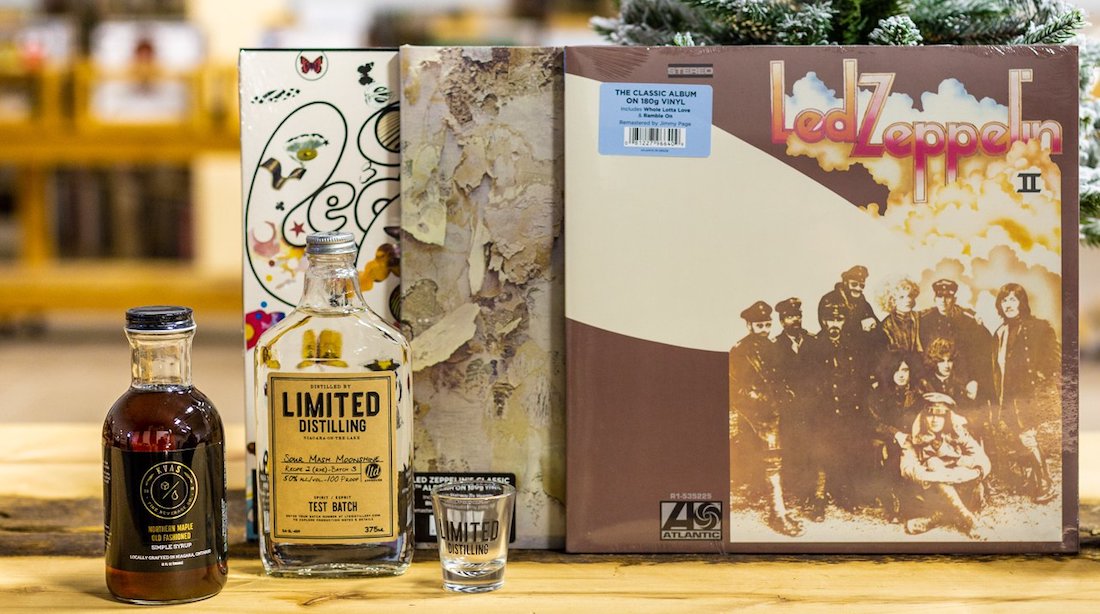
(As it turned out, they needn’t have worried, as Keyes reports that online record sales have boomed throughout the pandemic.)
“Alcohol has always been recession-proof,” says Keyes, “And we both love the creativity involved in making spirits.”
After five years of saving, planning, and preparing, including a year and a half spent simply scouting for a premises, Limited Distilling was ready to go in the summer of 2018. Unfortunately, the local municipal authorities had other plans, mainly involving zoning and permits, and finding common ground for the two parties meant that the actual opening was postponed over a year to October of 2019. The silver lining in the delay? The store had plenty of product in stock and ready to sell!
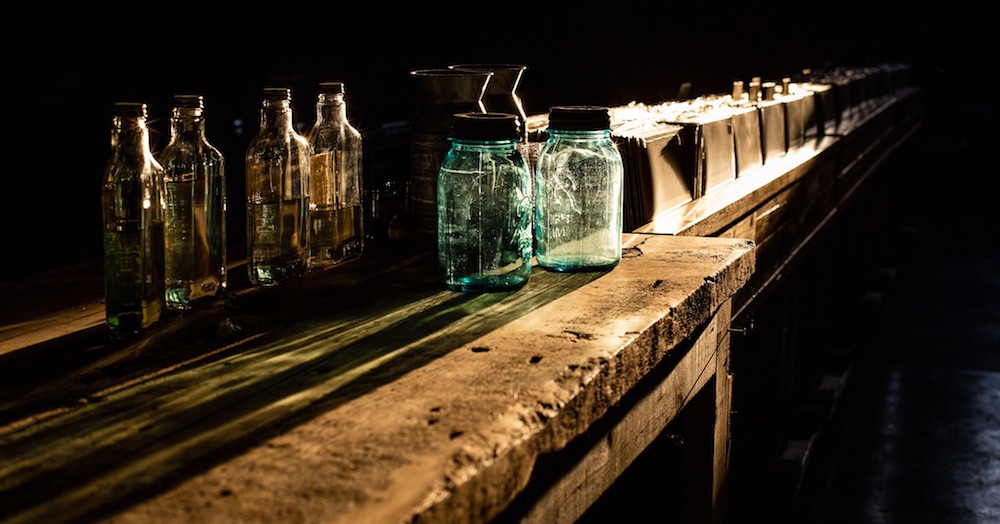
That store might be the most unusual thing about the distillery. In a large, expansive premises, Keyes and Miles operate the distillery on one side – with plenty of room available for future expansion, says Keyes – and the record business on the other. The two operations meet at the store in the middle, where vinyl records co-exist with vodkas, moonshines, and other spirits. When eventually Niagara fully reopens, patrons will be able to browse for music while sipping on a cocktail.
As for those spirits, here, too, Keyes and Miles take a bit of a different approach.
While Keyes sees whisky production as his ultimate goal, with two or three formulations aging in the barrel already, short term success obviously depends on unaged spirits, including a corn-based vodka, a gin, a white rye, and several flavoured vodkas and moonshines. For that last group, rather than create one base spirit for all of the flavourings, as is customary, Keyes crafts the alcohol according to what the flavour profile of the end beverage will be, using a greater amount of sweet corn for a spicy product like their Jalapeño Moonshine, made with peppers grown in their own garden, a larger percentage of spicy rye for a sweeter Apple Pie Moonshine, flavoured with apple cider and brown spices, and so on.
Small wonder Keyes reports that vinyl enthusiasts have been embracing the distillery side of their businesses just as spirits aficionados are often surprised and delighted to find such meticulously prepared products for sale in a record shop. That this project of twin passions is conveniently located just off Niagara Stone Road is an obvious bonus.

Limited Vodka (40%): Not being a huge fan of corn-based vodkas, which tend towards the sweeter side, I first approached this last year with a certain degree of caution. My hesitancy proved quite unfounded, though, as I found myself beguiled by its fresh, fragrant and, yes, sweet aroma of slightly peppery alcohol and dried corn with background notes of stone fruit and wind-swept meadow. On the palate, it is soft and supremely smooth, its natural sweetness held in check by a balanced alcohol presence and slightly grassy, herbal notes, all finishing dry, a bit spicy and not at all harsh. Small wonder I named it my Niagara vodka of 2020.
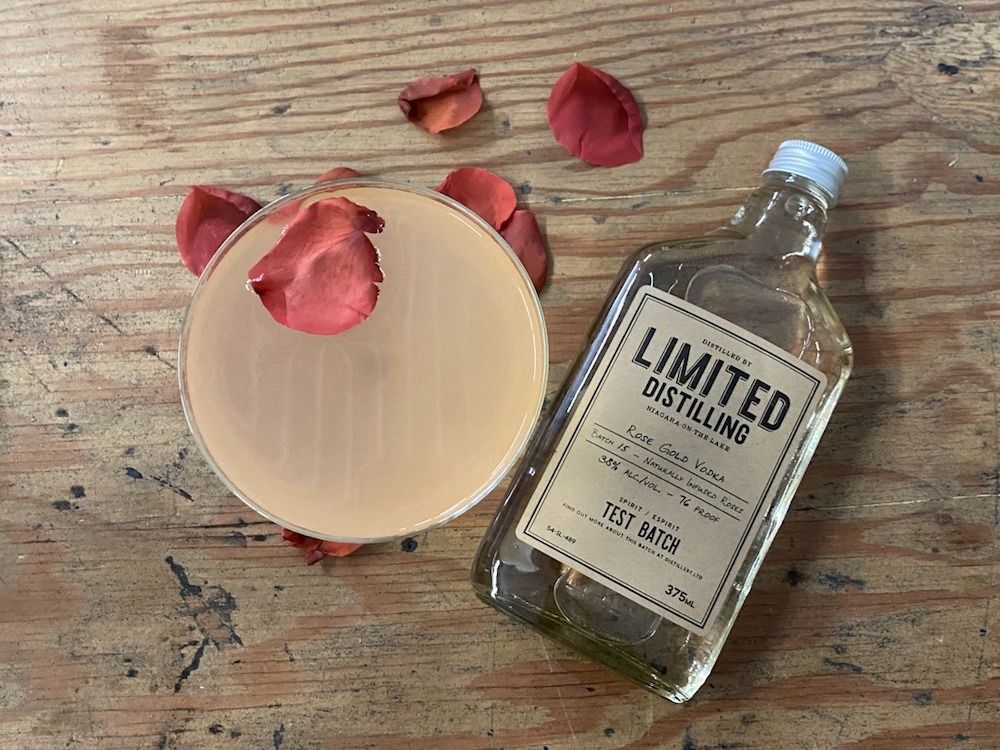
Rose Gold Vodka (38%): When he came for his job interview, Niagara College Artisan Distilling program graduate Lokesh Khismatrao brought with him a sample of this rose-infused spirit, his own creation, and landed the job! Very faintly yellow in colour, it has an unsurprisingly floral aroma that mixes rose notes with hints of berry and citrus, plus a touch of seashore. The base spirit is the distillery’s vodka, so the flavour is sweet and creamy, with a gentle and mostly retro-olfactory floral character combining nicely with the vodka’s herbal notes. Not for mixing, or even over-chilling, this is best sipped all on its own with a special friend.
 White Rye (43%): In Canada, you can’t legally call a spirit ‘whisky’ until it has been aged in wood for a minimum of three years, hence the tendency of some distilleries to market their unaged whiskies as ‘white rye,’ aka ‘white dog’ or ‘new make,’ depending upon what country you’re in. (The United States, mostly, for the former, and Scotland for the latter.) This one is 40% barley and 60% rye, with a robust aroma of fresh grain, strongly peppery spice and, oddly, a touch of wet oak. On the palate it is far smoother than some, with pinpricks of black pepper up front dissolving into a more grainy mid-palate with a bit of porridge-y creaminess, segueing back to the pepper on the finish. While obviously youthful, it has solid mixability now and good potential or the future.
White Rye (43%): In Canada, you can’t legally call a spirit ‘whisky’ until it has been aged in wood for a minimum of three years, hence the tendency of some distilleries to market their unaged whiskies as ‘white rye,’ aka ‘white dog’ or ‘new make,’ depending upon what country you’re in. (The United States, mostly, for the former, and Scotland for the latter.) This one is 40% barley and 60% rye, with a robust aroma of fresh grain, strongly peppery spice and, oddly, a touch of wet oak. On the palate it is far smoother than some, with pinpricks of black pepper up front dissolving into a more grainy mid-palate with a bit of porridge-y creaminess, segueing back to the pepper on the finish. While obviously youthful, it has solid mixability now and good potential or the future.

Limited Gin (43%): There are those gins that speak only softly of their juniper – think Bombay Sapphire or Hendrick’s – and those which wear the piney berry proudly – mostly in the London dry style. Then there is Limited Gin, the juniper aroma of which is clearly discernable from a foot or two away! Alongside are aromatic notes of peppery coriander and grapefruit zest, which manifest themselves more cleanly in the body, alongside – guess what? – juniper notes, minty herbals and a touch of lemon. Not for the juniper-timid, but definitely for those who think Beefeater or Tanqueray might be a bit too tame.
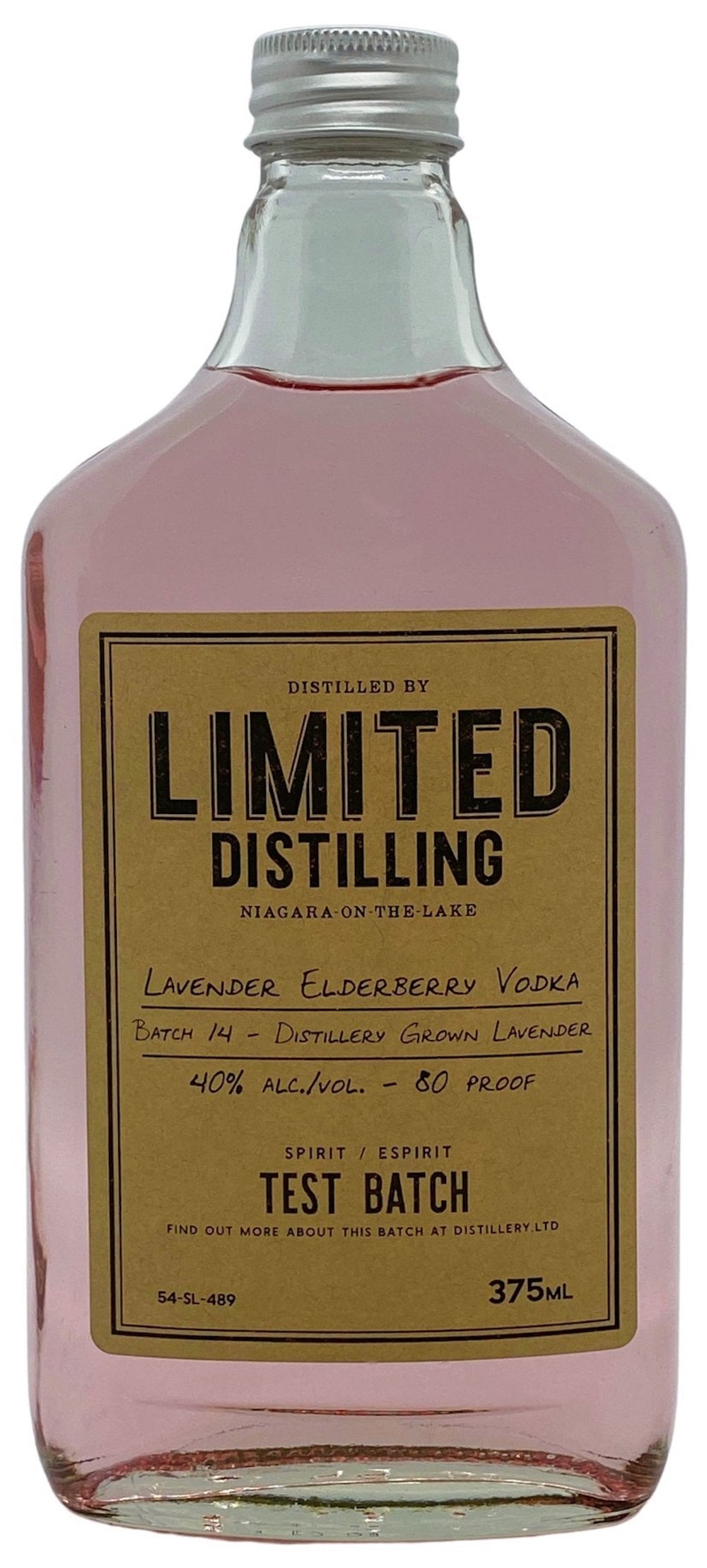 Lavender Elderberry Vodka (40%): Made with lavender grown at the distillery, this is a pretty light pink in colour and unapologetically floral on the nose, with elderberry notes at first peaking out from underneath a carpet of lavender then growing bolder as the spirit sits in the glass. On the palate, the retro-olfactory effect is strong – plug your nose and it tastes like regular vodka, unplug and floral notes of lavender and rose flood the senses, buoyed by a slight fruitiness. The floral character even persists after swallowing, although in more muted terms. A bit overwhelming on its own, this would make a good base for creative mixology.
Lavender Elderberry Vodka (40%): Made with lavender grown at the distillery, this is a pretty light pink in colour and unapologetically floral on the nose, with elderberry notes at first peaking out from underneath a carpet of lavender then growing bolder as the spirit sits in the glass. On the palate, the retro-olfactory effect is strong – plug your nose and it tastes like regular vodka, unplug and floral notes of lavender and rose flood the senses, buoyed by a slight fruitiness. The floral character even persists after swallowing, although in more muted terms. A bit overwhelming on its own, this would make a good base for creative mixology.
 Jalapeño Moonshine (43%): Do you like the taste of jalapeños? If the answer to that question is yes, then dig right in to this spirit. If, on the other hand, it’s no, then run far, far away. Tinged green and flavoured with peppers grown at the distillery, this both smells and tastes of fresh jalapeños, with the sweetness of the base spirits moderating the peppery heat only somewhat. On the finish, the peppery flavours fade fairly quickly, but the burn lingers for quite a while. Sip this neat or on the rocks if you’re a confirmed pepperhead; use in an otherwise unseasoned Bloody Mary or Caesar if not.
Jalapeño Moonshine (43%): Do you like the taste of jalapeños? If the answer to that question is yes, then dig right in to this spirit. If, on the other hand, it’s no, then run far, far away. Tinged green and flavoured with peppers grown at the distillery, this both smells and tastes of fresh jalapeños, with the sweetness of the base spirits moderating the peppery heat only somewhat. On the finish, the peppery flavours fade fairly quickly, but the burn lingers for quite a while. Sip this neat or on the rocks if you’re a confirmed pepperhead; use in an otherwise unseasoned Bloody Mary or Caesar if not.
About Stephen Beaumont
Stephen Beaumont is one of the world’s leading writers on beer and spirits, with 15 books to his credit, including Canadian Spirits: The Essential Cross-Country Guide to Distilleries, Their Spirits, and Where to Imbibe Them (with Christine Sismondo) and the upcoming, fully revised and updated third edition of The World Atlas of Beer (with Tim Webb).


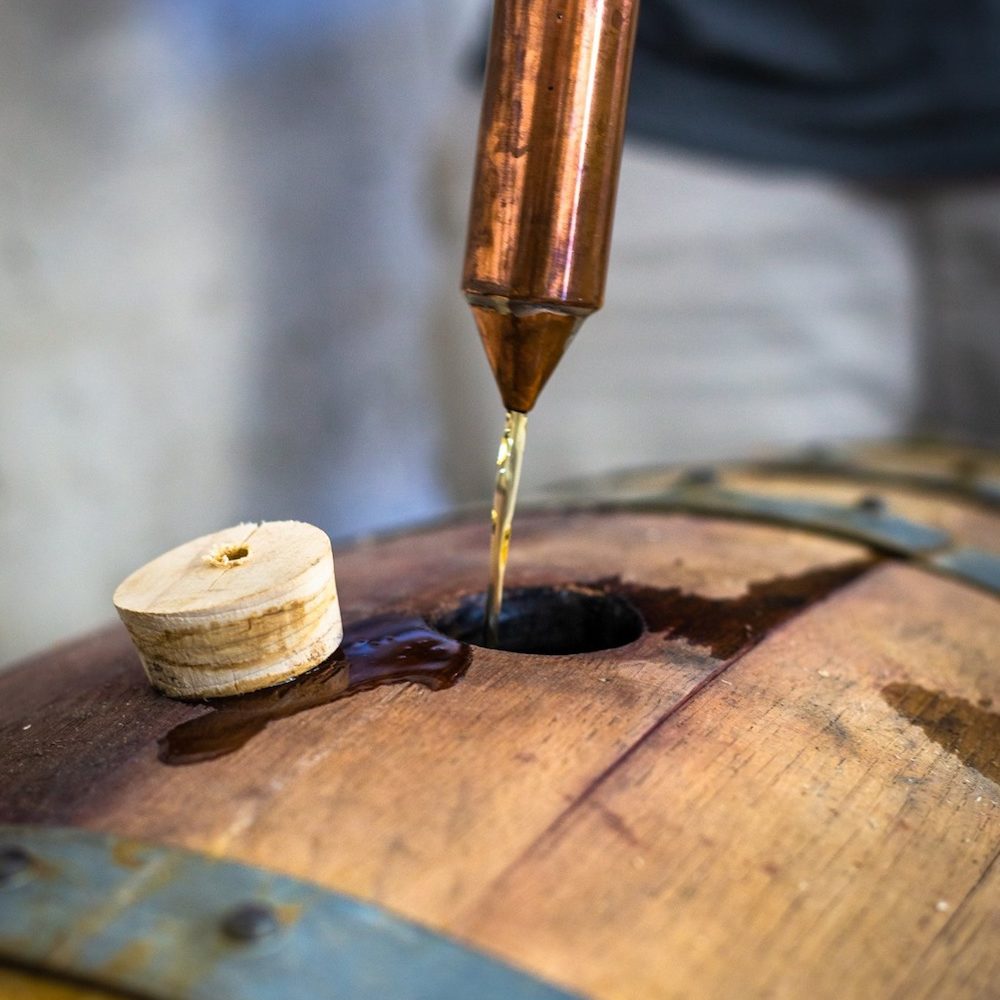





Comment here